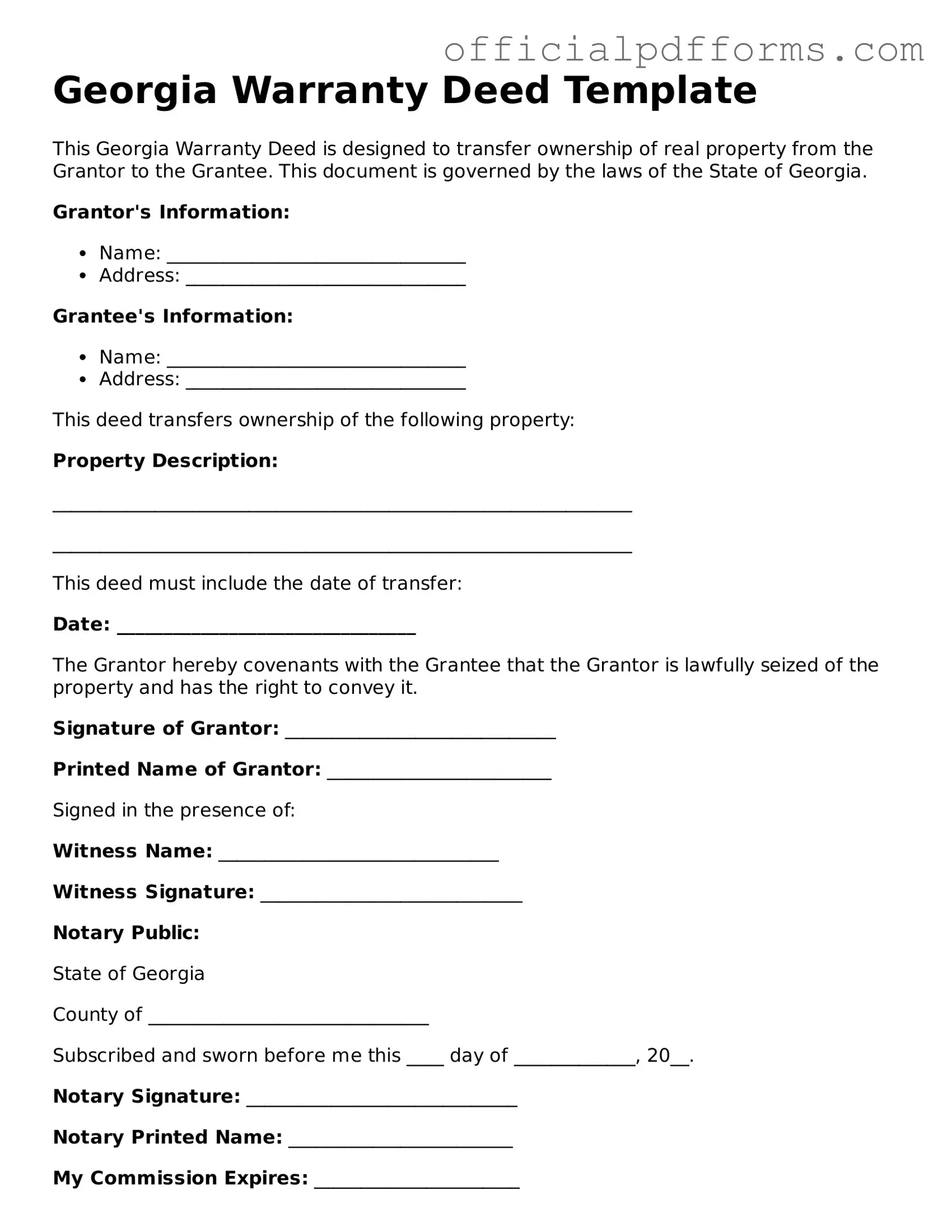A Georgia Deed form is a legal document used to transfer ownership of real estate in the state of Georgia. This form outlines the details of the property being transferred, including the names of the parties involved, the legal description of the property, and any relevant conditions of the transfer. It serves as an official record of the transaction and is essential for establishing legal ownership.
What types of deeds are available in Georgia?
In Georgia, several types of deeds can be used, including:
-
Warranty Deed:
Guarantees that the seller holds clear title to the property and has the right to sell it.
-
Quitclaim Deed:
Transfers whatever interest the seller has in the property without any warranties.
-
Special Warranty Deed:
Offers limited guarantees, only covering the time the seller owned the property.
-
Deed of Bargain and Sale:
Implies that the seller has the right to sell the property but does not guarantee clear title.
Filling out a Georgia Deed form involves several steps:
-
Begin with the names and addresses of the grantor (seller) and grantee (buyer).
-
Provide a legal description of the property, which can be found in previous deeds or tax records.
-
Include the consideration amount, which is the price paid for the property.
-
Sign the document in front of a notary public.
-
Ensure that the deed is recorded with the county clerk’s office to make it official.
Do I need a lawyer to prepare a Georgia Deed?
While it is not legally required to hire a lawyer to prepare a Georgia Deed, consulting with one can be beneficial. A lawyer can help ensure that the deed is correctly filled out and that all legal requirements are met. However, many individuals choose to use online services or templates to create their deeds without legal assistance.
What is the cost to record a Georgia Deed?
The cost to record a Georgia Deed varies by county. Typically, the fee can range from $10 to $50, depending on the specific county's regulations and the number of pages in the document. It’s important to check with your local county clerk’s office for the exact fees and any additional requirements.
How long does it take to record a Georgia Deed?
The recording process for a Georgia Deed is usually quick. Once the deed is submitted to the county clerk’s office, it can be recorded within a few days. However, processing times may vary based on the volume of documents being filed and the specific county's procedures.
What happens after I record my Georgia Deed?
After you record your Georgia Deed, the deed becomes a public record. This means it can be accessed by anyone who wishes to verify property ownership. The recorded deed serves as proof of ownership and protects your rights as the property owner. It is advisable to keep a copy of the recorded deed for your records.
Can I change a Georgia Deed after it has been recorded?
Once a Georgia Deed has been recorded, changes cannot be made directly to that document. If you need to make changes, such as correcting errors or adding a co-owner, you will need to create a new deed. This new deed must then be properly executed and recorded to reflect the changes in ownership.
